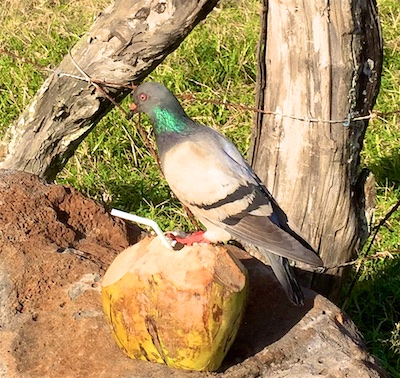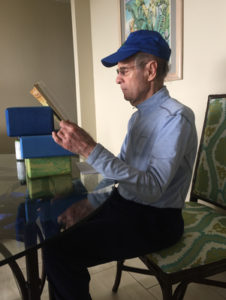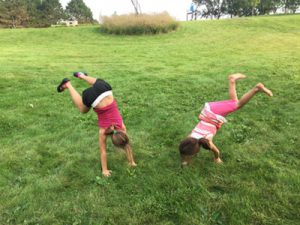 A spontaneous purchase at the airport has gotten me all riled up. I bought a paperback that made a big claim; it purported to guide one to live an awesome life.* Of course I took this with a grain of salt but a quick glance showed me that it was filled with anecdotal stories that included the author’s experience with yoga. I thought it would be fun to read on the plane.
A spontaneous purchase at the airport has gotten me all riled up. I bought a paperback that made a big claim; it purported to guide one to live an awesome life.* Of course I took this with a grain of salt but a quick glance showed me that it was filled with anecdotal stories that included the author’s experience with yoga. I thought it would be fun to read on the plane.
The first part of the book was enjoyable. I found myself nodding my head often as many of the author’s stories and suggestions resonated with me. As I got further into the book, I realized that it was based on a concept that seems very popular in self-help circles these days: if you put positive thoughts out into the world, you will reap the rewards. I understand this to be a simplified version of New Thought Philosophy called, “The Law of Attraction.”
I am hesitant to dive into this way of thinking. Of course, if you don’t put it out there, nothing will happen. However, I know there are many stories of people who do put it out there and still experience tremendous difficulty. They just don’t get as much press. The self-help movement tends to focus on success stories.
My cynicism on the rise, I arrived at the chapter that focused on yoga titled, “Present as a Pigeon.” The author began by sharing a class experience of practicing pigeon pose—a simplified variation of eka pada rajakapotasana, which requires significant hip mobility. She began by explaining that she hates this pose because, “my hips don’t move that way, it hurts, and I’m always scared I’m gonna get stuck.” She then tells us that she is determined to, “relax into it.” and at the same time is hoping that the teacher will hurry up because, “I think I’m going to rip something.”
She then decides to breathe into it and stop listening to the chatter in her mind. After a bit she feels her body, “go deeper into the pose than it’s ever gone before.” She feels no pain and is, “one with the Universe.” She then realizes that her knee, “just got all hot” and is upset that the teacher is “not going to shut up.” Suddenly something shifts as she explains, “I melt deeply into the pose and feel such bliss and true connection to something much larger than myself.”
As I read this story, I felt anger and frustration bubbling up and wanted to have a face-to face conversation with the author. I channeled that feeling into jotting down initial notes for this blog.
The next week I tried out a new yoga studio on Maui. It was a class full of women of different ages and abilities. The teacher was a young woman with a pliable body who tended toward rib thrusting; an excessive movement of the thoraco-lumbar joint that can lead to unnecessary wear and tear on the spine and a host of other long-term ailments. (those of you who have taken my classes know that I’m a stickler about clamping down on this habit as it can lead to many long term problems) Throughout class the teacher instructed the students to “Push harder, push deeper, don’t let your mind limit you.”
The examples above exhibit a desire to empower others so that worries and fears do not get in one’s way. Willpower does have its place, but I must question the wisdom of overriding clear signals of physical pain.
It is a neurological fact that our minds affect our bodies. Our unconscious protective mechanisms can prevent us from doing things that our bodies are actually capable of accomplishing. Sometimes its good to push past our perceived limitations but sometimes it can be harmful. A healthy yoga practice depends on the ability to discern what is best for our overall well-being and to choose the appropriate physical response. This is not always easy.
When I hear a teacher say, “don’t let your mind stop you; go past the restriction,” I believe it is imperative to reflect upon why the mind might be causing the restriction. Is it because of an emotional or an irrational fear? Could it be based on a traumatic memory that the unconscious wants to avoid? Could it be that the mind is protecting the body? Or perhaps it’s not the mind that is causing the restriction but an actual physiological boundary that can’t be crossed.
Acute pain is a sign that we should immediately stop doing something. If we are not able to change our situation, the body does its best to survive in the moment. To this end, it send outs chemicals—most notably endorphins—that temporarily reduce our perception of the pain to enable us to take immediate action. Not coincidentally, these chemicals can also lead to feelings of euphoria.
The author’s experience of her knee feeling hot, signals to me that her brain is telling her that she is in a dangerous situation and should immediately change her position. Because she chose to stay and “breathe into it,” her body dealt with the threat by releasing chemicals to temporarily mask the pain, resulting in feelings of bliss.
While she felt “at one with the universe” it is highly likely that she was experiencing micro-tears in her ligaments that could have long-term effects.
As students it is easy to make ourselves vulnerable. It is natural to want to trust the person guiding us. However, we must be on the watch for mixed signals. I’ve noticed that some teachers begin class by saying, “listen to your body, don’t do anything that causes harm” but later give an instruction to breathe into the pain. I don’t think they realize that they are sending out conflicting messages.
Next time you are in pigeon pose, or another position in which you feel pain, listen to the warnings that your mind is sending to your body. Take the time to tune in and consider if these messages are truly based on fear or a desire to avoid discomfort. It is possible that your mind is quite wise and is actually protecting you from irrevocable harm. Sometimes it is better to observe a pigeon sitting on a coconut than to practice pigeon pose.
*Sincero, Jen. You are a Badass: How to Stop Doubting Your Greatness and Start Living an Awesome Life. Philadelphia, Running Press, 2013.


